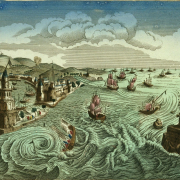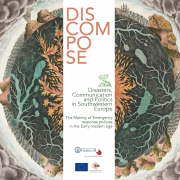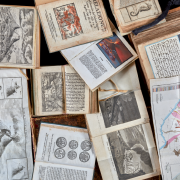Data related to thousands of sources on natural disasters in the Spanish Monarchy during the early modern age can be consulted through the DisComPoSE Digital Archive. The research group has collected and analysed a huge number of documents and divided them into three categories: manuscripts, printed texts, and images.
The period best covered by the catalogued sources is between 1538 and 1755. The disasters represented by the greatest number of sources are the eruption of Monte Nuovo in 1538, the eruption of Huaynaputina in 1600 in Peru, the Seville flood of 1626, the eruption of Vesuvius in 1631, the Sannio earthquake of 1688, and the Lima earthquake of 1687.
Research can be conducted by type of disastrous event, date and location of the event, title, author, dedicatee or addressee, printer, date and place of printing, language, or conservation institute. The records are enriched with detailed summaries.
In many cases, it is possible to access transcriptions of the texts and links to digital reproductions from the library or museum that holds the document. Numerous links between the sources highlight similar elements and the existence of other types of relationships between the documents, referring, for example, to translations, copies, and response letters.
Also extremely useful is the glossary of Italian terms used to indicate or describe the event, material, physical and psychological damage, emergency, and reconstruction.
The possibilities for quantitative and qualitative analysis of the data are varied. Depending on their research question, users can cross-reference certain fields, create a spatial representation of the data, considering, for example, the geographical coordinates of the places of composition, or decide to focus on an in-depth linguistic analysis of the transcriptions.
The database will continue to be enriched with new data. Scholars interested in adding their sources are invited to contact the research group by writing to infodiscompose@unina.it.
Do a search in the Digital Archive












Leave a Reply
Want to join the discussion?Feel free to contribute!